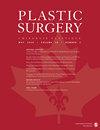Development and Validation of the Jawline Subject Satisfaction Scale
IF 0.7
4区 医学
Q4 SURGERY
引用次数: 0
Abstract
Introduction: Research in aesthetic medicine commonly includes evaluations of subject satisfaction with treatment results. However, conventional analytic methods typically generate statistically imprecise ordinal scores. To overcome this limitation, researchers have begun employing the Rasch model, an analytical framework grounded in item response theory. The Rasch model permits scale modifications capable of enhancing measurement accuracy. This study focuses on using the Rasch model to evaluate a scale measuring subject satisfaction following aesthetic treatments to the jawline. Objective: To develop and validate a multiitem, self-administered questionnaire measuring patient satisfaction with aesthetic treatment of the jawline. Methods: A 10-item questionnaire [The Jawline Subject Satisfaction Scale (JS下颌角受试者满意度量表的开发与验证
介绍:美容医学研究通常包括对受试者治疗效果满意度的评估。然而,传统的分析方法通常会产生统计上不精确的序数分数。为了克服这一局限性,研究人员开始采用拉施模型,这是一种以项目反应理论为基础的分析框架。Rasch 模型允许对量表进行修改,从而提高测量的准确性。本研究的重点是使用 Rasch 模型对测量下颌角美容治疗后受试者满意度的量表进行评估。研究目的开发并验证多项目自填式问卷,测量患者对下颌角美容治疗的满意度。方法:采用 10 个项目的调查问卷:设计了一份包含 10 个项目的问卷[下颌角受试者满意度量表 (JS3)] 来测量受试者对下颌角美容治疗的满意度。每个问题都使用 5 点李克特量表进行回答,回答选项从 "非常满意 "到 "非常不满意 "或 "非常同意 "到 "非常不同意 "不等。量表的心理测量学特性(项目和人的信度和分离度、项目和人的拟合统计量、单维性和局部独立性)通过基于从 40 名受试者样本中收集的数据集的 Rasch 模型进行了验证。分析结果Rasch 分析结果显示,JS3 的内部一致性很高,人的信度估计值为 0.86,项的信度估计值为 0.96。人和项目的分离估计值分别为 2.50 和 4.72,这表明量表有能力区分高分和低分应答者,并验证了工具的构造。所有 infit 值和 outfit 值均在既定范围内(0.5-1.5),数据符合单维性和局部独立性模型。将原始分数转换为对数,然后再转换为 Rasch 测量值。这些测量值可用于进行标准统计分析,评估治疗和/或群体效应。结论:应用 Rasch 模型产生了一个有效且可靠的量表(即 JS3),用于测量美容治疗后对下颌角外观的满意度。
本文章由计算机程序翻译,如有差异,请以英文原文为准。
求助全文
约1分钟内获得全文
求助全文
来源期刊

Plastic surgery
Medicine-Surgery
CiteScore
1.70
自引率
0.00%
发文量
73
期刊介绍:
Plastic Surgery (Chirurgie Plastique) is the official journal of the Canadian Society of Plastic Surgeons, the Canadian Society for Aesthetic Plastic Surgery, Group for the Advancement of Microsurgery, and the Canadian Society for Surgery of the Hand. It serves as a major venue for Canadian research, society guidelines, and continuing medical education.
文献相关原料
| 公司名称 | 产品信息 | 采购帮参考价格 |
|---|
 求助内容:
求助内容: 应助结果提醒方式:
应助结果提醒方式:


